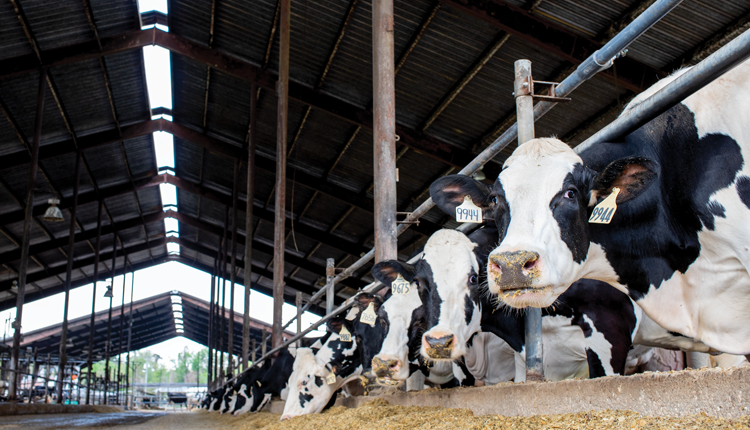
Research telling us that long forage particles in the ration cause problems continues to accumulate. We commonly measure these long particles with the top sieve (19 millimeter) of the Penn State Particle Separator. Current recommendations — especially for common silage-based rations — call for minimizing long particles on this sieve, with a target of about 2% to 5% of the as-fed total mixed ration (TMR). The focus has shifted recently to the second (8 mm) sieve since these particles are roughly the same size as the feed bolus swallowed by the cow while eating.
Feed particles retained on the 8 mm sieve should make up 50% or more of the as-fed TMR. Rations with this particle distribution allow a proper balance of eating time with resting and rumination time — the key to a healthy and productive cow.
Minimize sorting and eating time
Let’s focus on the feed particles retained on the top sieve. Research indicates that TMR particles retained on the top sieve are most likely to be sorted by the cow. As you can imagine, sorting introduces considerable variation into the nutrient composition of the ration actually consumed by individual cows. Consequently, particles retained on the top sieve are associated with larger variations in chewing behavior, rumen pH, dry matter intake, and milk yield during early lactation.
Herds with the highest milkfat percentage focus on the particle distribution of their TMR and ensure that greater than 50% of the ration shakes out on the second (8 mm) sieve. The top sieve is less important for maintaining milk components. Miner Institute recommendations for the top sieve state that particles should not exceed about 1 inch to 2 inches in length. This length minimizes risk of sorting and allows the cow to efficiently eat the particles and not take too long at the feedbunk. Remember that time spent eating beyond about five hours per day often translates into less time available for lying down in the stalls and ruminating.
Work published in 2023 by Wisconsin and Brazilian dairy scientists found that corn silage-based TMR that had been enriched with particles retained on the top sieve, versus TMR enriched with corn silage particles retained on the second sieve, cut chewing time by an hour daily, dropped milk yield by 5 pounds daily, and lowered milkfat and protein percentage. In fact, the physical effectiveness factor (ability to stimulate chewing) of the longer particles was only 75% of those on the second sieve. Longer particles in the ration do not necessarily elicit more chewing!
Most recently, a meta-analysis reported at this summer’s American Dairy Science Association conference of 153 published papers from 1990 to 2021 concluded that as mean particle size of the diet climbed, both dry matter intake and milk yield declined. Focusing on the particles that shake out on the top sieve, the researchers found that these long particles were negatively related with feed intake, energy-corrected milk yield, and milkfat percentage. Additionally, eating time ramped up by about two minutes daily with every one percentage unit increase in the longer particles retained on the top sieve.
Overall, the research tells us to focus on the second sieve of the Penn State Particle Separator with common silage-based rations and to carefully manage the amount and size of the longest ration particles that shake out on the top sieve. When too long and too many, these particles result in the exact opposite of what we want from physically effective fiber!








